- Crazy Pablo
- Posts
- Rebelling with Silence: Shirin Neshat and the Women of Allah
Rebelling with Silence: Shirin Neshat and the Women of Allah
The photograph Rebellious Silence from the Women of Allah series suddenly felt very now. Not because it's trendy. Because it still stings. When one image holds still, but everything around it keeps shifting—you know it hit something real.
First time reading? Sign up here.
The Rifle That Divides the Face (marked red)
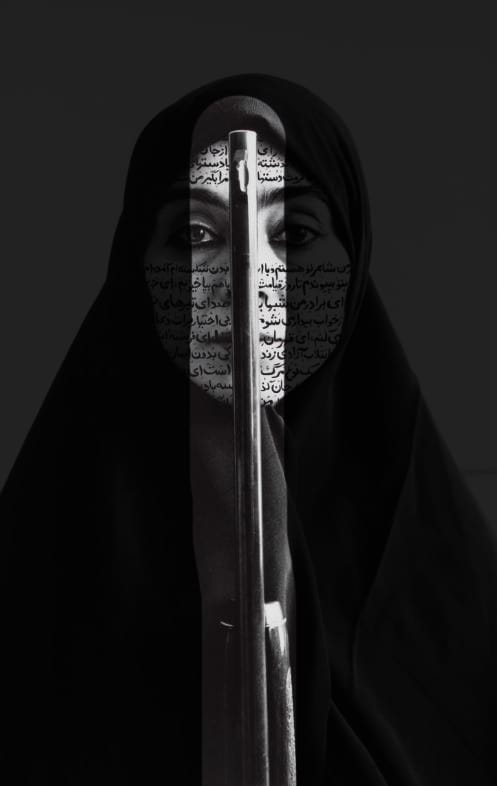
The long barrel of a rifle rises from the bottom edge of the frame and slices the portrait along a central vertical axis—passing through the woman’s lips, nose, and forehead. The image remains calm, but the symmetry conceals inner turmoil. One face, two sides.
The Chador That Frames the Body (marked blue)
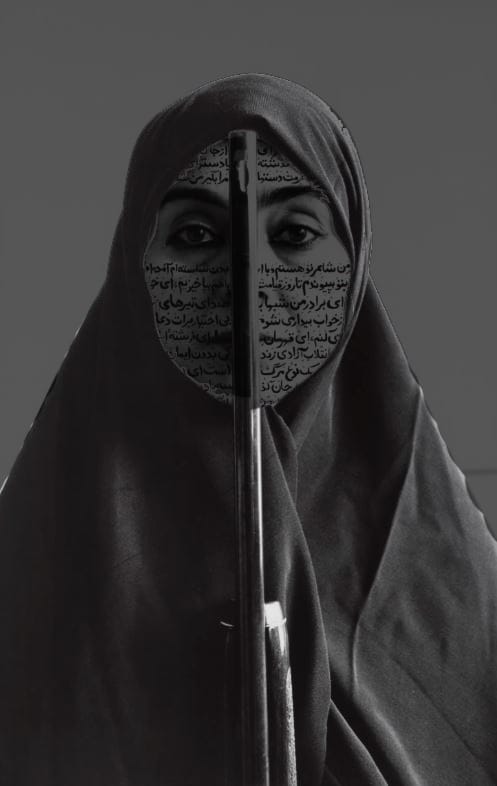
Neshat’s subject is cloaked in a black chador, its hard edge sharply outlined against a white background. The visual contrast is stark and minimal—modern in design, yet deeply rooted in tradition. The garment protects and conceals. It hides the body from the gaze but also hides the woman from visibility itself. In Neshat’s hands, the chador is a surface of tension: religious, political, and profoundly personal.
The Calligraphy That Covers the Skin (marked green)
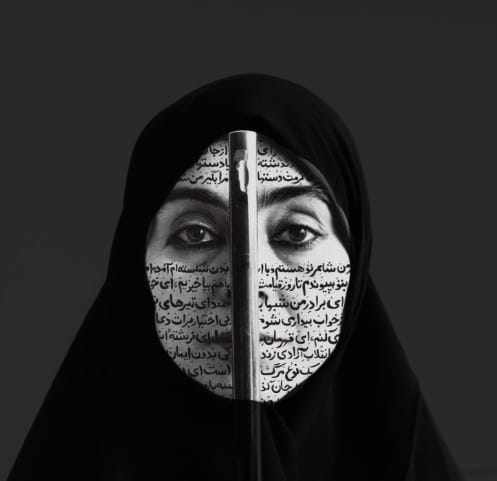
Handwritten Farsi text flows across the woman’s face—calligraphy that Western eyes may see as ornament. But it’s not decoration. These are lines of poetry by Iranian writer Tahereh Saffarzadeh. They speak of martyrdom, conviction, and wakefulness. Like a second skin, the text anchors the image in Iranian culture and reminds us that words, like veils or weapons, carry both beauty and power.
Fun FactWhen Shirin Neshat returned to Iran after 17 years in exile, she encountered a country transformed by the 1979 Islamic Revolution. The visual codes of daily life—especially for women—had shifted. That tension sparked the Women of Allah series, where rifles, veils, poetry, and gaze collide in stark black-and-white. Rebellious Silence is the most iconic work in the series. But Neshat didn’t shoot it to provoke—it’s a meditation on complexity. She called every woman’s silent stare “a far more complex and paradoxical reality behind the surface.” She’s not glorifying violence, nor reducing faith to oppression. She’s exposing how Western and Eastern views alike flatten identity. This image is a protest, but it’s also a mirror. |
Think About It 🤔
This image doesn’t just subvert Western expectations—it exposes them. From afar, the calligraphy might read as ornamental, a nod to Islamic art traditions. But the words inscribed on these women’s faces are not decorative. They’re soul-deep. They speak of defiance, martyrdom, inner conflict—complex emotions hidden behind what the West often reads as silence or submission. When we exoticize, we miss the message.
How does it relate to the here and now? or What to say during casual conversation to show off your art knowledge?
Veil or Mirror? – “What we call a veil might actually be a mirror. Neshat turns the Western gaze back on itself, exposing how cultural assumptions blur what we really see. It’s a reminder that visibility and invisibility are both forms of power.”
Not Just Art, It’s a Warning – “Rebellious Silence isn’t only about identity—it’s about control. Neshat shows how regimes use symbols like the veil or the rifle to shape obedience. In a time when women’s rights are under threat worldwide, her work reminds us how fast freedom can become silence.”
Now have another Look!
And If You’re Up for More…
Watch Persepolis (2007), the animated film by Marjane Satrapi. This coming-of-age story set during and after the Iranian Revolution offers a personal, witty, and heartbreaking lens on what it meant to grow up—especially as a girl—during such a turbulent time.
Read Women Without Men by Iranian author Shahrnush Parsipur. Banned in Iran, this magical realist novella tells the interwoven stories of five women seeking freedom and identity in a patriarchal society. Shirin Neshat later adapted it into a visually stunning feature film in 2009.
Sometimes silence isn’t passive. It’s a stance. I’d love to know - what did this image open up for you? Just hit reply.
Yours,
Inbal Z M

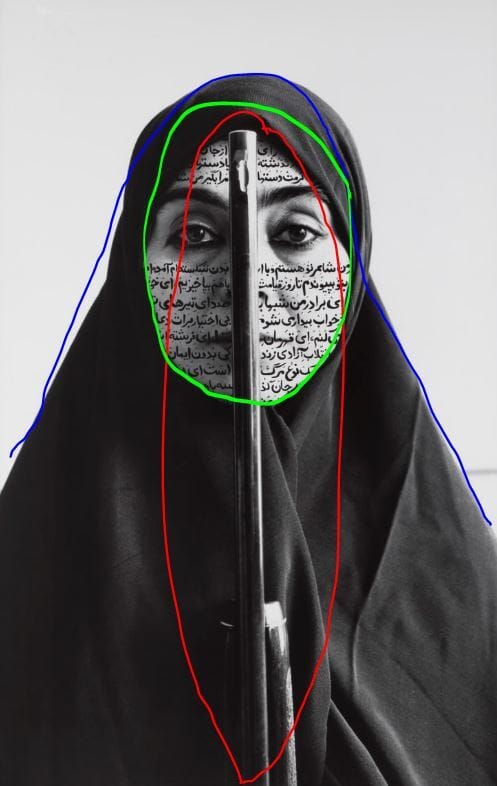
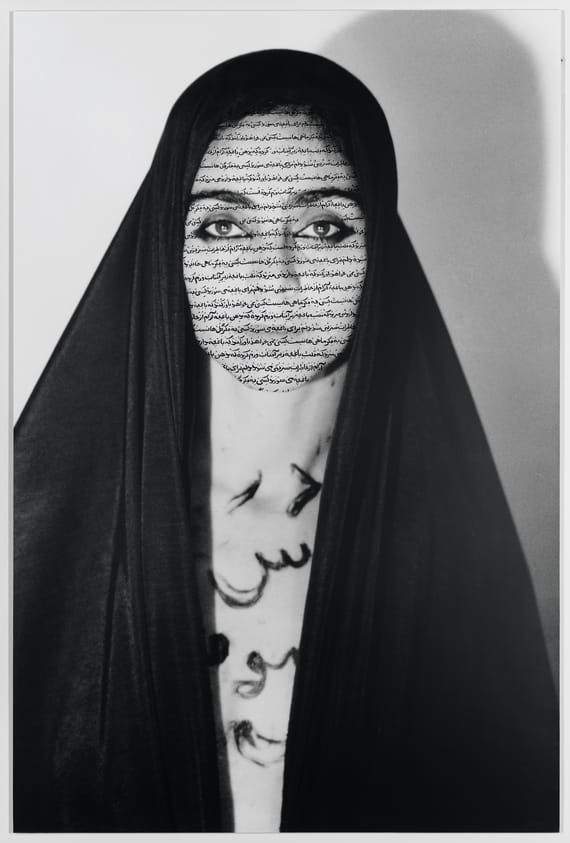

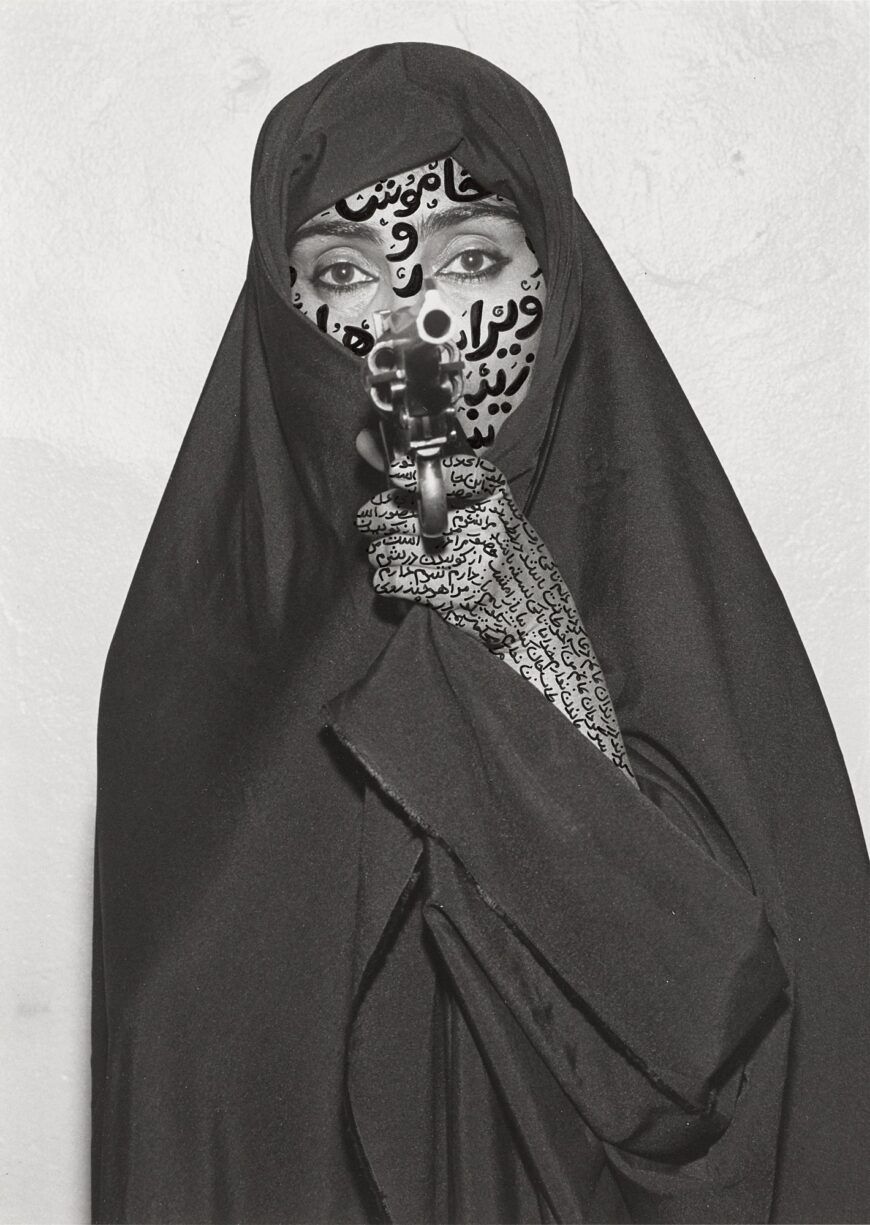
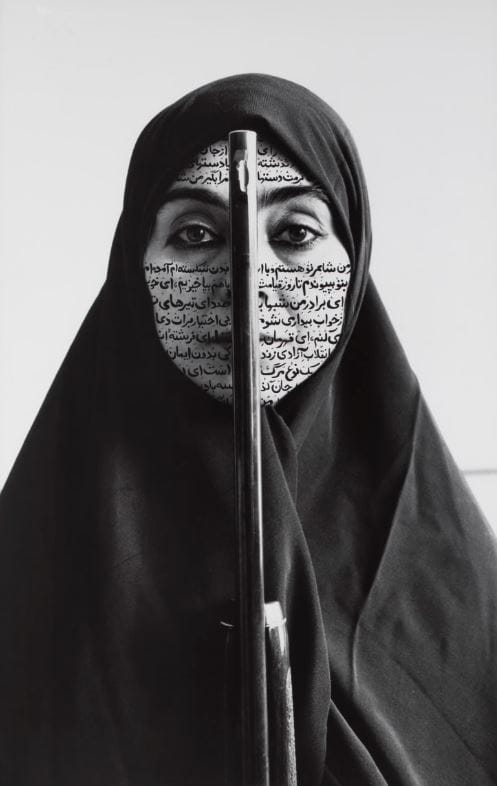
Reply